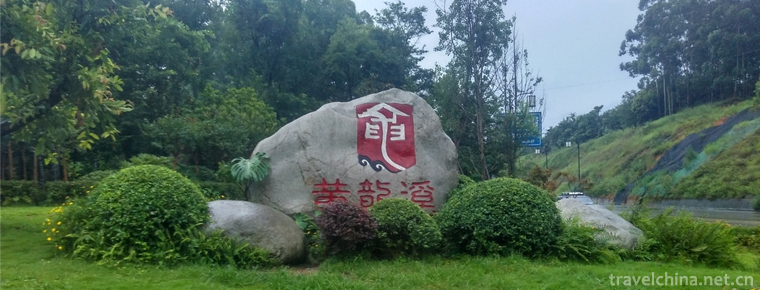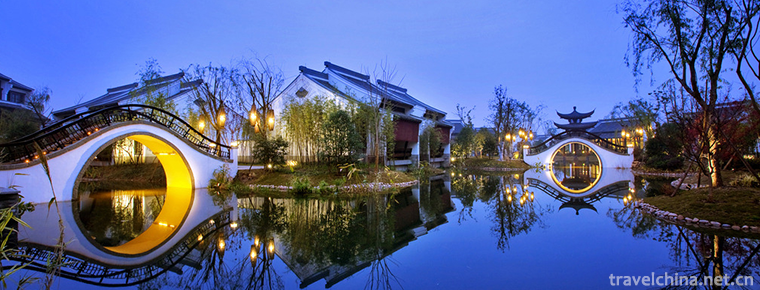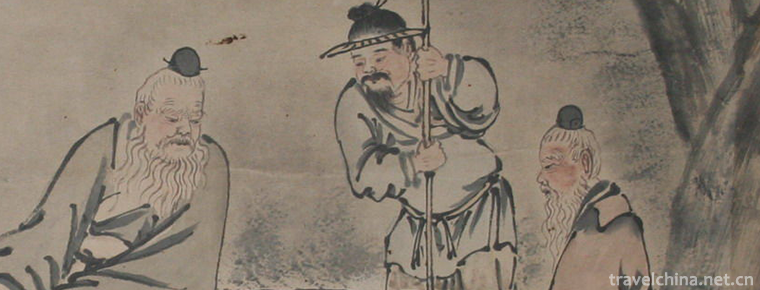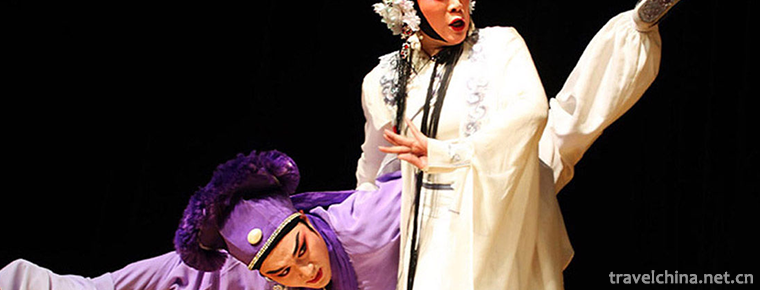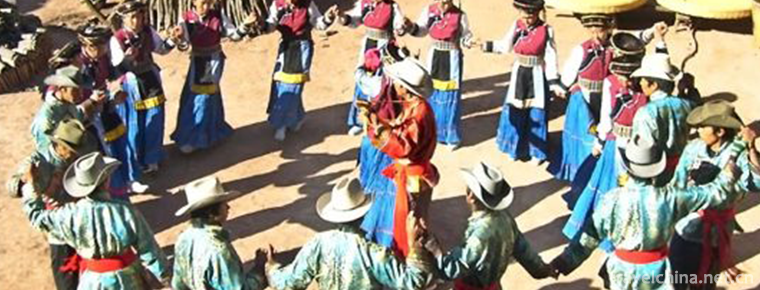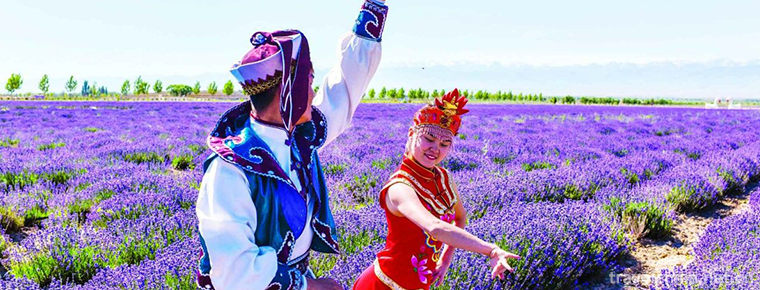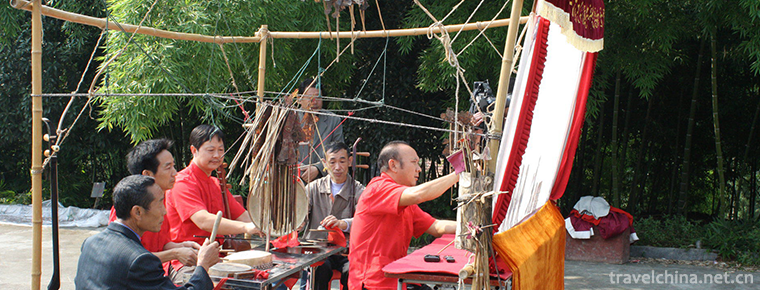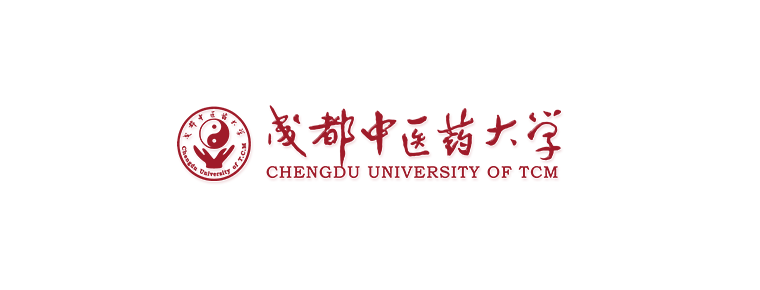Ningde Huo Boy Line Lion
Ningde Huo Boy Line Lion
Ningde Huo children's lion is a traditional folk culture, which controls the lion's movement and expression through silk thread. Line lion is mainly pulled by head rope, tail rope and parotid rope, so that the line lion sits, squats and swings on the stage. It can also contain balls and spit balls, plus light changes, smoke and fire, percussion music strength and weakness. The big line lion weighs more than 40 kilograms, and the small line lion weighs more than 20 kilograms.
On May 20, 2006, the heritage was approved by the State Council and listed in the first batch of national intangible cultural heritage list. .
History of Development
According to historical legend, Huang Jugong, a disciplinarian doctor and founder of the Sui Dynasty, once irrigated Huo Tong's villages and fields for the benefit of his people. The local people commemorated Huo Tong by holding a "February 2nd" lantern festival, and the Lion Line Performance was one of the most distinctive programs in the "February 2nd" lantern festival. Since the middle and late Ming Dynasty, Huo Tong Lion has become an important part of the local festival culture.
In the thirty-ninth year of Jiajing in the Ming Dynasty (1560), Japanese Japanese Japanese invaders entered Hengyu Island, Ningde County, and traveled across the countryside, burning and plundering. Qi Jiguang, a famous general, marched into Fujian to fight against Japanese aggressors and recover Hengyu Island. Villagers celebrated. At this time, Huo Tongxian Lion entered the county town to perform and display his skills. Huo Tong Line Lion mainly has Huang Jia and Chen Jia. And in the annual "February 2" lantern show performance, later deduced into a folk event. In the event, Huang Jia and Chen Jia Line Lion each bring forth new ideas and push the lamp meeting to a climax. Huang Jia has the theory of lion game, Chen Jia has the theory of puppet lion, the two origins have their own merits .
Line lion art of Chen surname originated from string puppets in Quanzhou and Nan'an in the flourishing Tang Dynasty. In Kangxi period of Qing Dynasty, the ancestors of Chen surname moved from Nan'an to Huo Tong Town, and brought this art to Huo Tong . In the 1940s, the structure of Chen's Lion Line was relatively simple, without lighting background, such as metal steel sheet and stainless steel sheet. When there was no electricity, the eyes would not blink or shine. And there are bamboo strips inside, which are easy to break. Later, they are easily rubbed and replaced by other materials where they are easy to break. Lion's feet also developed from bamboo strips to wood carvings and joints.
In 1945, the masses of Ningde Chengguan invited Huo Tonglion to perform in the street to celebrate the victory of the War of Resistance Against Japan; in 1956, Huo Tonglion participated in the amateur literary and artistic performance of the masses in Fujian Province and won the Creation Award and Performance Award .
During the Cultural Revolution (1966-1976), the performance of Huo Tonglion was stopped because the "February 2" lamp would be regarded as "old".
In 1988, CCTV broadcasted Huo Tong Lion Special Program, which was praised as "one of the best". In 1991, Huo Tong Lion participated in 27 performances and 230,000 spectators. During the Spring Festival of 1997, Huo Tong Lion was invited to Macao for 14 days on tour; in 2001, he went to Xiamen to participate in "one family on both sides of the Taiwan Straits" art performances; in January 2002, he participated in Fujian people's performances. The Lantern Festival is a festival of art. In 2004, he was invited by Fujian Folk Art Troupe to become a member of the troupe .
In February 2009, at the invitation of 14 ministries such as the Ministry of Culture, the Development and Reform Commission and the Beijing Municipal Government, he went to Beijing to participate in the performance of the "China intangible cultural heritage traditional art exhibition". He also gave special performances for officials of embassies in China and organs of ministries and commissions of the state. Major leaders of the Party and the state visited and took photos with the Lions. The Ministry of Culture awarded Huo Tonglion a "Special Contribution Award" and CCTV's "Truth" live interview broadcast Huo Tonglion's performance skills in 2009 .
During the Spring Festival of 2014, from 7 to 8 February, Huo Tonglion, representing Fujian folk art, participated in the 2014 Singapore "Buhai Concentric" cosmetics parade held in Singapore, which was the first time that Huo Tonglion troupe performed abroad .
On October 18, 2015, he participated in the opening ceremony performance of the First National Youth Games .
On January 30, 2016, in the second finals of Beijing Satellite TV's "Heritage", the "Three Lions Dance" group consisting of Huo Tonglion, Guangdong Xinglion and Quanzhou Lined Puppet defeated the "Martial Style" group consisting of Taizhou Stone Lock, Jinmen Dao and Jiaxing Bulldog, and obtained the qualification to perform in the United Nations . In March, the film "Nanquan Line Lion" crew went to Badu Monkey Shield, Minkeng Village and Yangdong Mountain Village in Jiaocheng District to collect spots. The content was based on Huo Tong Line Lion, telling the story of integrating family, friendship and love .
Projects Making
Before the performance, the production of the stage, the lighting effect and the rope layout were all manually operated. The knotting of rope is a key link in the performance of Lion Thread. Every perforation must be meticulous and conscientious. The ball held by the line lion is delicate and dexterous. The big net basket is covered with small balls which rotate freely. The balls are equipped with lights and shine at night, symbolizing the stars. The lion's body is made of various materials, with bamboo strips as the framework, filled with cotton, cloth, rubber, etc., while the lion's hair is made of special colored plastic silk. After the reform of Chinese folk artists in past dynasties, the size of the line lion has developed from small puppet to huge and heavy, the structure has changed from simple to complex, and the production technology has also been greatly developed and improved .
Performing Form
Performers stand behind the stage to lift ropes, people are less than 5 meters away from lions, more than 10 meters; more than a dozen line lion artists score into arrays, with one person in each group as the main supplement, with no room for cooperation; lion dancers pull ropes at different rhythms or frequencies, performing various movements and manners of lions; lion dancers not only need skilled skills, but also need plenty of physical strength.
Huo Tong Lion uses ropes to manipulate lions to perform various actions, including literary and martial arts. Its performances include four forms: single lion (male), double lion (male and female), three lions (one mother and two sons), and five lions (one mother and four sons). Line lion performances were first performed along the way, dancing while walking, and then turning to fixed stage performances . Through the practical creation of the folk artists of past dynasties, they can perform sitting, squatting, awakening, stretching, yawning, scratching, scratching, licking, hibernating, snuggling, jumping, running, upperpillar, descending, drilling caves, etc.
Out of holes, climbing mountains, jumping streams, crossing ridges, soaring, whirling, rolling, gasping, trembling, roaring, roaring and other dynamics, just to show the lion play ball, there are such actions as seeking, chasing, catching, stepping on, biting, scrambling, holding, throwing and so on. All these dynamic performances of lions are realized by the collective manipulation and close cooperation of artists.
Chen's performance depends on music. Music uses drums, gongs and cha-cha. When male lions are brave, gongs and drums will play fiercely when they jump up. When female lions perform licking, the gongs and drums will slow down a little. The tune is usually clang. For performers to coordinate their movements, they need to rely on gongs and drums to direct .
Stories and legends
There are two legends about the history of the linear lion: one is that there are children crying, adults playing with children, and there are carved human animals on the windows of the houses built by Huo Tong's rich people. One of them is a lion carved over there. If the children want the lion, adults will find a way to make the carved lion with simple things, tie it up with cloth and bamboo baskets, and turn over the Taishi chair. For the shelf, pull with the thread, tease children with this music, from this basis to the present; one kind of legend is that the puppet of Quanzhou evolved, the puppet of string is people standing on the top, the lion of string is behind the frame, people pull outside, performers are more than five meters from the lion of line, more than ten meters from the lion of line, the action is based on it evolved .
In addition, according to historical legend, Huang Jugong, a disciplinarian doctor and founder of the Sui Dynasty, once irrigated Huo Tong's villages and fields for the benefit of his people. The local people commemorated Huo Tong by holding a "February 2" lantern festival. The Lion Line Performance is one of the most distinctive programs in the "February 2" lantern festival.
Inheritance
In 1987, the Huang family raised more than 80,000 yuan to build Huo Tong traditional Lion Club, and raised funds to build Huang Jiaping into a family training Lion tradition place . Chen's surname was unwilling to show weakness. In 1988, Chen Jia Line Lion House was built. Since then, not only the production of Line Lion has a special Line Lion House, but also the training has a fixed place .
Huo Tong Line Lion has a family inheritance rule that male does not inherit female, which leads to the lack of successors . Line lion performances are usually just traditional festival entertainment programs, even if invited to perform in other places, the income is often insufficient. Therefore, the performers of the line lion have to work to support their families on weekdays, gathering and rehearsing before the performance, which inevitably affects the study and development of the line lion performing art. After the 21st century, most of the performances of Lions are middle-aged and elders. Although young people also love this ancestral stunt, many young men learn it every year. However, most of them have to go out to make a living after they have completed their studies. They are too old to further improve their skills.
Up to 2008, Huo Tong Line Lion still has other problems, such as insufficient funds for development, changes in performance venues, fixed lines for the annual lamp walk, but on the fixed lines, wooden houses at the end of Huo Tong Street have appeared hidden dangers, with narrow crowds. Especially the application of lighting effect makes the fire safety equipment and management of the scene lag behind the pace of the annual lighting meeting. In addition to the 2000 yuan subsidy for the town, the investment of production funds basically depends on the family. With the increasing rhythm of market economy, people's interest in folk festivals has become increasingly indifferent .
In 2012, led by the Huo Tong Government, Ningde Liangyi Tourism Development Co., Ltd. signed a strategic cooperation agreement with the Huo Tong Line Lion Team to set up the Line Lion Show.
Museum, including the Huang Lion Line Team and Chen Lion Line Team each 40 minutes. The development of Huo Tong Lion has entered a stable stage of commercialization. Chen Xin, the captain of the Line Lion Team surnamed Chen, said, "In the past, the performance of the Line Lion was for the sake of face, but now the performance of the Line Lion is for the sake of rice bowl. It used to lose face if you didn't perform well, but now you're going to lose your job if you don't perform well. In this context, Huo Tonglion in the production of continuous integration of new technology, performance in the continuous creation of new programs .
Heritage protection
Since 2000, Huo Tong Town has supported Huo Tong Lion Lantern Club for over 10,000 yuan annually. Collect and publish Huo Tong Lion and its historical origins series. The Culture and Sports Bureau of Jiaocheng District dispatched special personnel to conduct a preliminary census of the art of Huo Tong Line Lion, and utilized various activities of the district government to provide funds for the activities, and invited the art of Line Lion to participate in various cultural and artistic activities of the district .
In March 2004, the Cultural and Sports Bureau of Jiaocheng District held a discussion meeting on the protection of Huo Tong's folk customs. Members of the CPPCC, academics and other relevant fields are invited to attend the meeting, through extensive exchange of views and suggestions, in order to further study how to protect the Huo Tong Line Lion, a folk art. In December 2004, the District Bureau of Culture and Sports dispatched special personnel to Huotong Town to conduct a preliminary survey of folk arts and crafts such as Huotong Line Lion and Paper Zha, and to collect Huotong Line Lion's reputation, stories and so on.
In June 2005, the District Bureau of Culture and Sports dispatched staff to conduct a re-investigation on the manifestations and cultural connotations of Huo Tong Lion on the basis of the original collection of Huo Tong Lion.
On May 20, 2006, the heritage was approved by the State Council and listed in the first batch of national intangible cultural heritage list .
Huotong Town Literature and History Institution has excavated Huotong Lion Culture. By 2008, six relevant books on local literature and history have been published. On the basis of protecting the traditional "February 2" lantern festival, Huotong Town held the "5 New Agricultural Promotion Fair" on March 18 to attract foreign visitors.
In November 2013, Huo Tong Town took a new initiative to build "Tour the Ancient Street, Watch the Lion" high-quality routes, with a total investment of more than 1.6 million yuan, including underground renovation, road surface renovation and elevation renovation .
In 2014, the National Development and Reform Commission issued a central budget of 44.98 million yuan for the construction of Fujian's national cultural and natural heritage protection facilities in 2014, of which 9 million yuan, or one fifth, was subsidized for the construction of Huo Tong Line Lion Hall in Jiaocheng District, Ningde City. The Huo Tong Line Lion House project is located in Huangcuoping Village, Huo Tong Town, Jiaocheng District. The total investment of the project is 15.61 million yuan, covering an area of 4,000 square meters, with a construction area of 2,800 square meters (including: 1,600 square meters of public welfare rehearsal hall, 360 square meters of production and maintenance studio of line lion, 360 square meters of line lion culture exhibition hall, 360 square meters of nursing and management room, 120 square meters of auxiliary room), and the construction of sewage and drainage, power supply and lighting system, fire protection. Theft-proof system, parking lot and other related facilities .

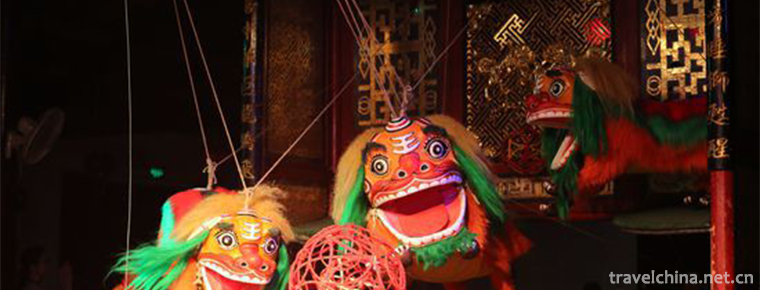
-
Huang Longxi
Huanglong Valley, Shuangliu District, Chengdu, Sichuan, China.
Views: 121 Time 2018-10-02 -
Xixi National Wetland Park
Xixi National Wetland Park is located in the west of Hangzhou City, Zhejiang Province. It is only 6 kilometers away from Wulin Gate, the main city of Hangzhou, and 5 kilometers away from West Lake..
Views: 184 Time 2018-12-07 -
Jingtai Yellow River Stone Forest
The Yellow River Stone Forest is located in the southeast of Jingtai County, Baiyin City, adjacent to Longwan Village, Zhongquan Township. It covers an area of about 10 square kilometers.
Views: 213 Time 2019-01-29 -
Dong Pipa Song
Dong Pipa song is distributed in the southern dialect area of Dong nationality, which can be divided into lyric and narrative Pipa song. Its singing content almost covers Dong history.
Views: 117 Time 2019-04-28 -
Legend of Ronke Mountain
The legend of Mount Ronke is a local folklore spread in Quzhou, Zhejiang Province. Weiqi originated in China, and it is said that the root of Weiqi is Mount Ronke..
Views: 147 Time 2019-05-11 -
Wenzhou opera
Ou Opera has a history of more than 300 years with "written warmth" as its stage language. The more influential traditional plays are Gao Ji and Wu Sanchun, Yanghe Pickup and the modern play.
Views: 89 Time 2019-06-08 -
Pumi rubbing
Pumi nationality rubbing "rubbing consultation" is Pumi language, "rubbing" means dancing, "rubbing" means dancing, that is, dancing. When dancing, the leader strikes the.
Views: 307 Time 2019-06-09 -
Sibo Belem Dance
"Bailun" dance is the generic name of Xibo self-entertainment dance and the first type of Xibo folk dance. It originated from an ancient dance that imitated life and production posture in th.
Views: 128 Time 2019-07-01 -
Chord cavity
Based on Pingli dialect in Ankang City, Shaanxi Province, there are 13 singing patterns, including 8 commonly used tunes, 18 suona tunes and 30 gongs and drums. Pingli string is a complete set of loca.
Views: 310 Time 2019-07-03 -
Chengdu University of TCM
Chengdu University of Traditional Chinese Medicine, formerly known as Chengdu College of Traditional Chinese Medicine, was founded in 1956. It was one of the earliest four Chinese medical colleges and.
Views: 221 Time 2019-08-31 -
Yulei mountain
Yulei mountain, according to the original note of "Mian County" in the book of geography of Han Dynasty, "the water of Yulei mountain flows from southeast to Jiangyang and enters into the river." In Shuo Wen, the word "Yu" is written as "the water flows out of Sichuan county, Mian Yu Lei, Shandong Province, and enters the river in the south of Shandong Province.
Views: 403 Time 2020-11-08 -
Introduction to Chengdu Giant Panda Base
Chengdu Giant Panda Breeding and research base (hereinafter referred to as the base) is located at 1375, Waibei panda Avenue, Chenghua District, Chengdu City, Sichuan Province, China. It is 10 kilometers away from the city center and more than 30 kilometers.
Views: 212 Time 2020-12-13
